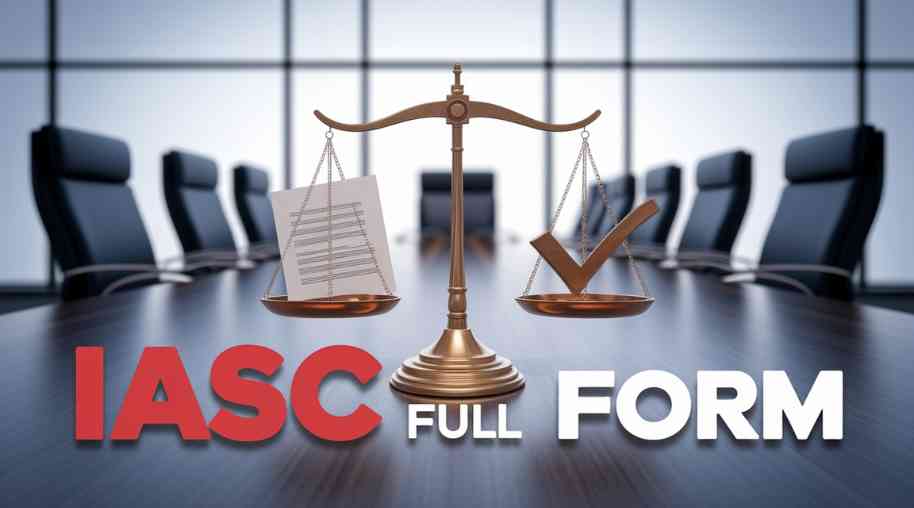IASC Full Form-Inspection and Audit Sub Committee
by Shashi Gaherwar
0 2017
Inspection and Audit Sub-Committee: Role, Functions, and Importance
Effective corporate governance and financial oversight are essential for any organization. An Inspection and Audit Sub-Committee plays a crucial role in ensuring transparency, regulatory compliance, and the overall integrity of financial operations. This article explores the objectives, responsibilities, and significance of the Inspection and Audit Sub-Committee in corporate governance and financial management.

What is an Inspection and Audit Sub-Committee?
An Inspection and Audit Sub-Committee is a specialized committee within an organization’s audit and governance structure. It is responsible for overseeing internal audits, compliance checks, and risk management procedures. The committee ensures that financial and operational activities align with legal and regulatory requirements, promoting accountability and transparency.
Key Functions of an Inspection and Audit Sub-Committee
The primary functions of an Inspection and Audit Sub-Committee include:
- Monitoring Internal Audit Processes
- The committee supervises internal audit functions, ensuring compliance with policies, procedures, and regulations.
- Ensuring Regulatory Compliance
- It ensures that the organization adheres to national and international accounting standards, tax laws, and financial regulations.
- Risk Assessment and Management
- Identifies potential risks, evaluates their impact, and recommends corrective measures to mitigate financial and operational risks.
- Reviewing Financial Statements
- Analyzes and verifies financial reports, balance sheets, and audit findings to ensure accuracy and integrity.
- Overseeing Fraud Prevention Measures
- Develops and monitors anti-fraud policies to prevent financial misconduct and mismanagement.
- Assessing Operational Efficiency
- Evaluates organizational processes to identify inefficiencies and recommend improvements for optimal performance.
Benefits of an Inspection and Audit Sub-Committee
Having an effective Inspection and Audit Sub-Committee provides multiple benefits, including:
- Enhanced Financial Transparency
- Regular audits and inspections ensure accurate financial reporting, increasing stakeholder confidence.
- Strengthened Internal Controls
- The committee helps establish and reinforce internal control mechanisms to prevent financial irregularities.
- Improved Risk Management
- Identifies potential risks and provides strategic solutions to minimize exposure to financial and operational threats.
- Regulatory and Legal Compliance
- Ensures adherence to corporate governance standards and regulatory requirements, reducing legal liabilities.
- Fraud Prevention and Detection
- Monitors financial activities to detect and prevent fraud, corruption, and mismanagement.
- Better Decision-Making
- Provides valuable insights that enable management to make informed financial and operational decisions.
Challenges Faced by the Inspection and Audit Sub-Committee
Despite its importance, the Inspection and Audit Sub-Committee faces several challenges:
- Increasing Regulatory Complexities
- Evolving financial regulations require continuous adaptation and monitoring.
- Limited Resources and Expertise
- Smaller organizations may struggle with insufficient audit expertise or funding for extensive audit functions.
- Resistance to Oversight
- Employees or management may resist audit recommendations, impacting compliance and implementation.
- Cybersecurity Risks
- Digital transformation increases vulnerability to data breaches and financial fraud, requiring advanced audit strategies.
Best Practices for an Effective Inspection and Audit Sub-Committee
To maximize effectiveness, the committee should adopt the following best practices:
- Regular and Independent Audits
- Conducting frequent and unbiased audits ensures objectivity and accuracy in financial reporting.
- Clear Roles and Responsibilities
- Defining the committee’s role clearly enhances efficiency and accountability.
- Strong Communication with Stakeholders
- Regular interaction with executive management, auditors, and regulators promotes transparency and compliance.
- Adoption of Technology
- Using audit management software and AI-powered analytics improves efficiency and fraud detection.
- Ongoing Training and Development
- Continuous learning ensures committee members stay updated on evolving financial regulations and best practices.
The Inspection and Audit Sub-Committee is a vital component of corporate governance, ensuring financial transparency, regulatory compliance, and risk management. By overseeing audits, reviewing financial reports, and implementing fraud prevention measures, the committee helps organizations maintain integrity and operational efficiency. Though challenges exist, adopting best practices and leveraging technology can enhance the committee’s effectiveness, making it an indispensable part of a successful business strategy.
Further Learning Resources
If you’re passionate about building a successful blogging website, check out this helpful guide at Coding Tag – How to Start a Successful Blog. It offers practical steps and expert tips to kickstart your blogging journey!
For dedicated UPSC exam preparation, we highly recommend visiting www.iasmania.com. It offers well-structured resources, current affairs, and subject-wise notes tailored specifically for aspirants. Start your journey today!

Share:








Comments
Waiting for your comments